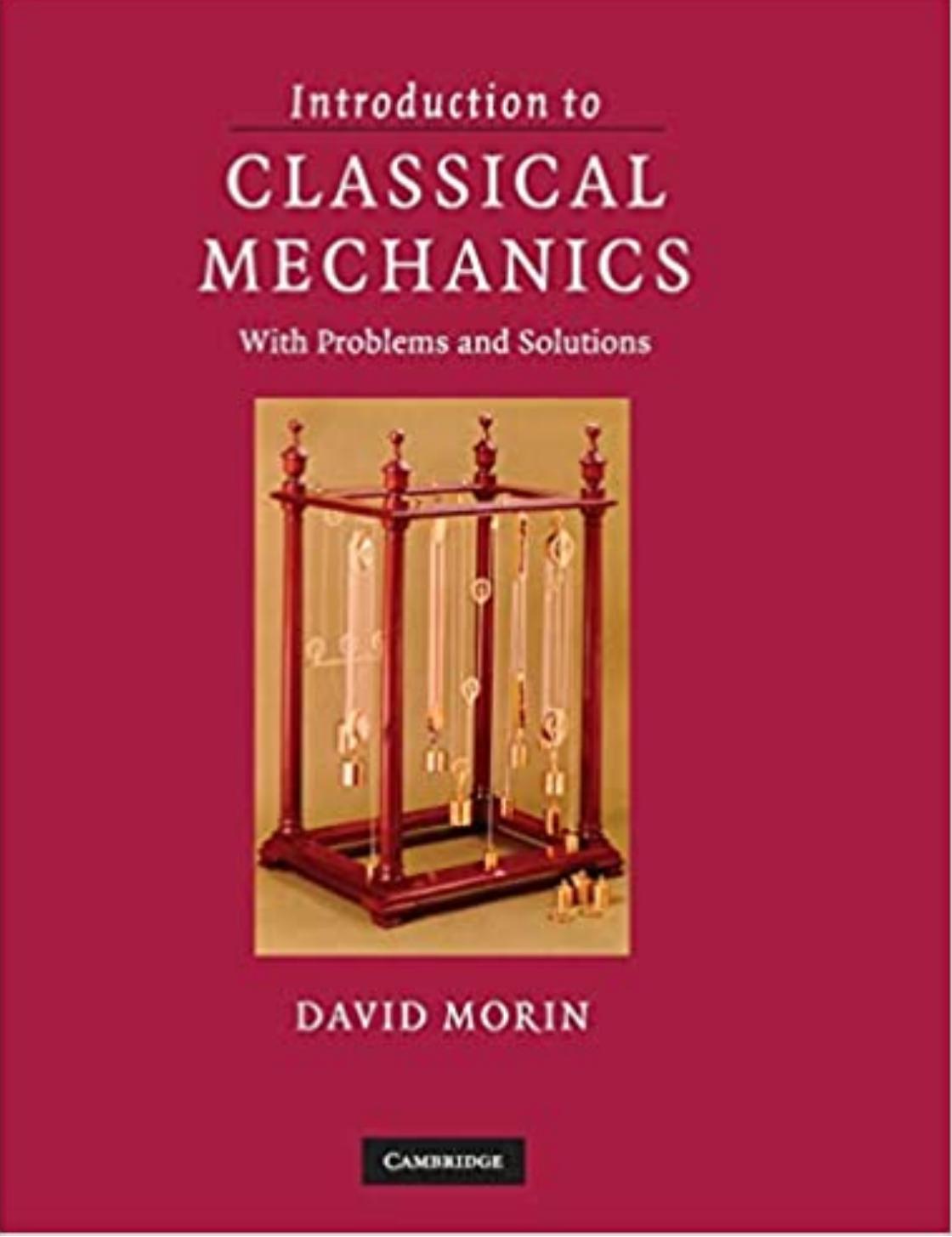Introduction to Classical Mechanics 1st Edition by David Morin ISBN 9781139637589 1139637584
$70.00 Original price was: $70.00.$35.00Current price is: $35.00.
Instant download Introduction to Classical Mechanics With Problems and Solutions Wei Zhi after payment
Introduction to Classical Mechanics 1st Edition by David Morin – Ebook PDF Instant Download/Delivery: 9781139637589, 1139637584
Full dowload Introduction to Classical Mechanics 1st Edition after payment

Product details:
ISBN 10: 1139637584
ISBN 13: 9781139637589
Author: David Morin
Introduction to Classical Mechanics
With Problems and Solutions
Introduction to Classical Mechanics 1st Table of contents:
Chapter 1: Strategies for solving problems
1.1 General strategies
1.2 Units, dimensional analysis
1.3 Approximations, limiting cases
1.4 Solving differential equations numerically
1.5 Problems
1.6 Exercises
1.7 Solutions
Chapter 2: Statics
2.1 Balancing forces
2.2 Balancing torques
2.3 Problems
2.4 Exercises
2.5 Solutions
Chapter 3: Using F = ma
3.1 Newton’s laws
3.2 Free-body diagrams
3.3 Solving differential equations
3.4 Projectile motion
3.5 Motion in a plane, polar coordinates
3.6 Problems
3.7 Exercises
3.8 Solutions
Chapter 4: Oscillations
4.1 Linear differential equations
4.2 Simple harmonic motion
4.3 Damped harmonic motion
4.4 Driven (and damped) harmonic motion
4.5 Coupled oscillators
4.6 Problems
4.7 Exercises
4.8 Solutions
Chapter 5: Conservation of energy and momentum
5.1 Conservation of energy in one dimension
5.2 Small oscillations
5.3 Conservation of energy in three dimensions
5.4 Gravity
5.5 Momentum
5.6 The center of mass frame
5.7 Collisions
5.8 Inherently inelastic processes
5.9 Problems
5.10 Exercises
5.11 Solutions
Chapter 6: The Lagrangian method
6.1 The Euler–Lagrange equations
6.2 The principle of stationary action
6.3 Forces of constraint
6.4 Change of coordinates
6.5 Conservation laws
6.6 Noether’s theorem
6.7 Small oscillations
6.8 Other applications
6.9 Problems
6.10 Exercises
6.11 Solutions
Chapter 7: Central forces
7.1 Conservation of angular momentum
7.2 The effective potential
7.3 Solving the equations of motion
7.4 Gravity, Kepler’s laws
7.5 Problems
7.6 Exercises
7.7 Solutions
Chapter 8: Angular momentum, Part I (Constant L)
8.1 Pancake object in x-y plane
8.2 Nonplanar objects
8.3 Calculating moments of inertia
8.4 Torque
8.5 Collisions
8.6 Angular impulse
8.7 Problems
8.8 Exercises
8.9 Solutions
Chapter 9: Angular momentum, Part II (General L)
9.1 Preliminaries concerning rotations
9.2 The inertia tensor
9.3 Principal axes
9.4 Two basic types of problems
9.5 Euler’s equations
9.6 Free symmetric top
9.7 Heavy symmetric top
9.8 Problems
9.9 Exercises
9.10 Solutions
Chapter 10: Accelerating frames of reference
10.1 Relating the coordinates
10.2 The fictitious forces
10.3 Tides
10.4 Problems
10.5 Exercises
10.6 Solutions
Chapter 11: Relativity (Kinematics)
11.1 Motivation
11.2 The postulates
11.3 The fundamental effects
11.4 The Lorentz transformations
11.5 Velocity addition
11.6 The invariant interval
11.7 Minkowski diagrams
11.8 The Doppler effect
11.9 Rapidity
11.10 Relativity without c
11.11 Problems
11.12 Exercises
11.13 Solutions
Chapter 12: Relativity (Dynamics)
12.1 Energy and momentum
12.2 Transformations of E and p
12.3 Collisions and decays
12.4 Particle-physics units
12.5 Force
12.6 Rocket motion
12.7 Relativistic strings
12.8 Problems
12.9 Exercises
12.10 Solutions
Chapter 13: 4-vectors
13.1 Definition of 4-vectors
13.2 Examples of 4-vectors
13.3 Properties of 4-vectors
13.4 Energy, momentum
13.5 Force and acceleration
13.6 The form of physical laws
13.7 Problems
13.8 Exercises
13.9 Solutions
14 General Relativity
14.1 The Equivalence Principle
14.2 Time dilation
14.3 Uniformly accelerating frame
14.4 Maximal-proper-time principle
14.5 Twin paradox revisited
14.6 Problems
14.7 Exercises
14.8 Solutions
People also search for Introduction to Classical Mechanics 1st:
introduction to classical mechanics with problems and solutions
introduction to classical mechanics morin
introduction to mechanics physics
intro to classical mechanics
intro to mechanics


